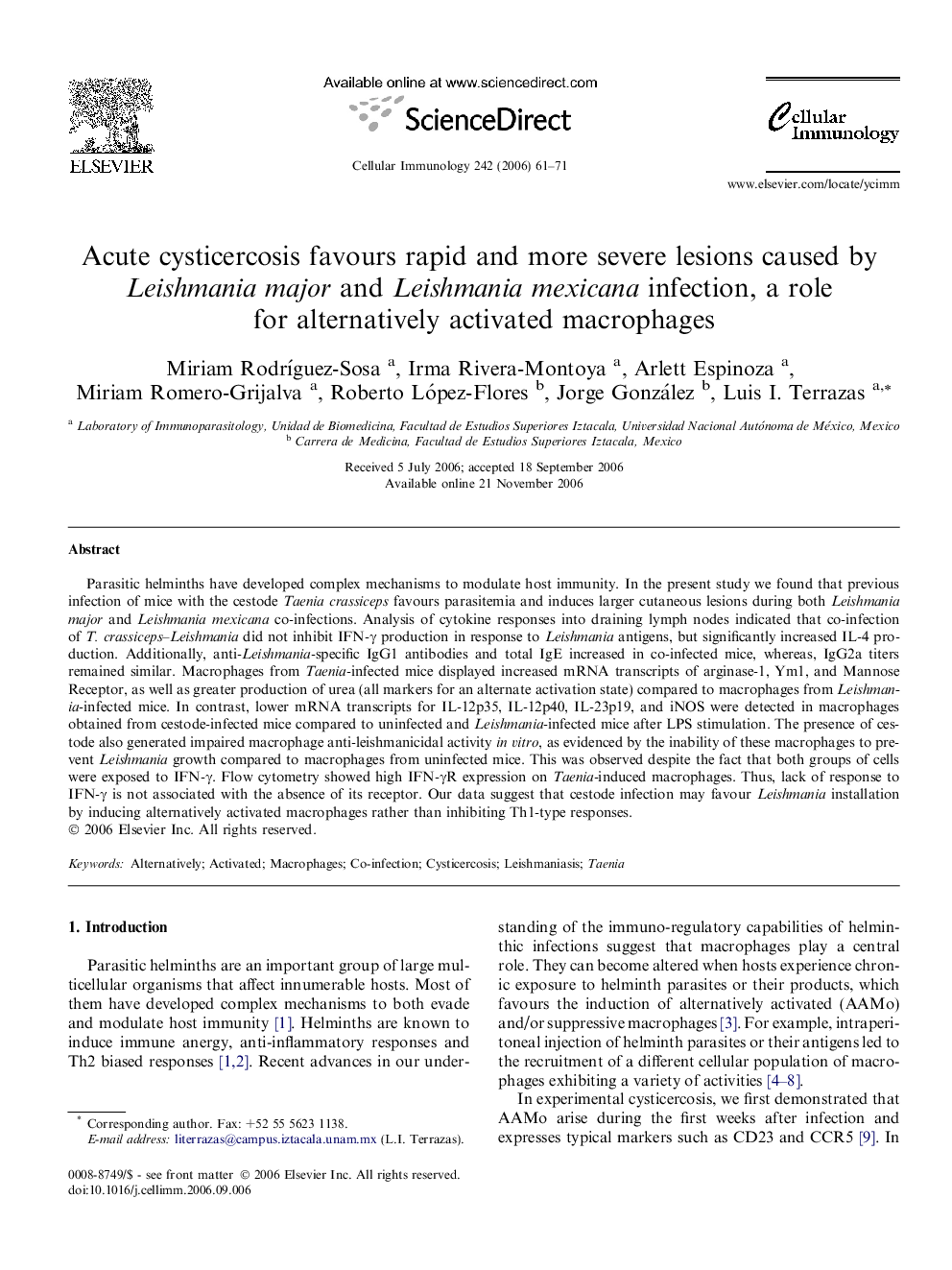| Article ID | Journal | Published Year | Pages | File Type |
|---|---|---|---|---|
| 2168167 | Cellular Immunology | 2006 | 11 Pages |
Parasitic helminths have developed complex mechanisms to modulate host immunity. In the present study we found that previous infection of mice with the cestode Taenia crassiceps favours parasitemia and induces larger cutaneous lesions during both Leishmania major and Leishmania mexicana co-infections. Analysis of cytokine responses into draining lymph nodes indicated that co-infection of T. crassiceps–Leishmania did not inhibit IFN-γ production in response to Leishmania antigens, but significantly increased IL-4 production. Additionally, anti-Leishmania-specific IgG1 antibodies and total IgE increased in co-infected mice, whereas, IgG2a titers remained similar. Macrophages from Taenia-infected mice displayed increased mRNA transcripts of arginase-1, Ym1, and Mannose Receptor, as well as greater production of urea (all markers for an alternate activation state) compared to macrophages from Leishmania-infected mice. In contrast, lower mRNA transcripts for IL-12p35, IL-12p40, IL-23p19, and iNOS were detected in macrophages obtained from cestode-infected mice compared to uninfected and Leishmania-infected mice after LPS stimulation. The presence of cestode also generated impaired macrophage anti-leishmanicidal activity in vitro, as evidenced by the inability of these macrophages to prevent Leishmania growth compared to macrophages from uninfected mice. This was observed despite the fact that both groups of cells were exposed to IFN-γ. Flow cytometry showed high IFN-γR expression on Taenia-induced macrophages. Thus, lack of response to IFN-γ is not associated with the absence of its receptor. Our data suggest that cestode infection may favour Leishmania installation by inducing alternatively activated macrophages rather than inhibiting Th1-type responses.
